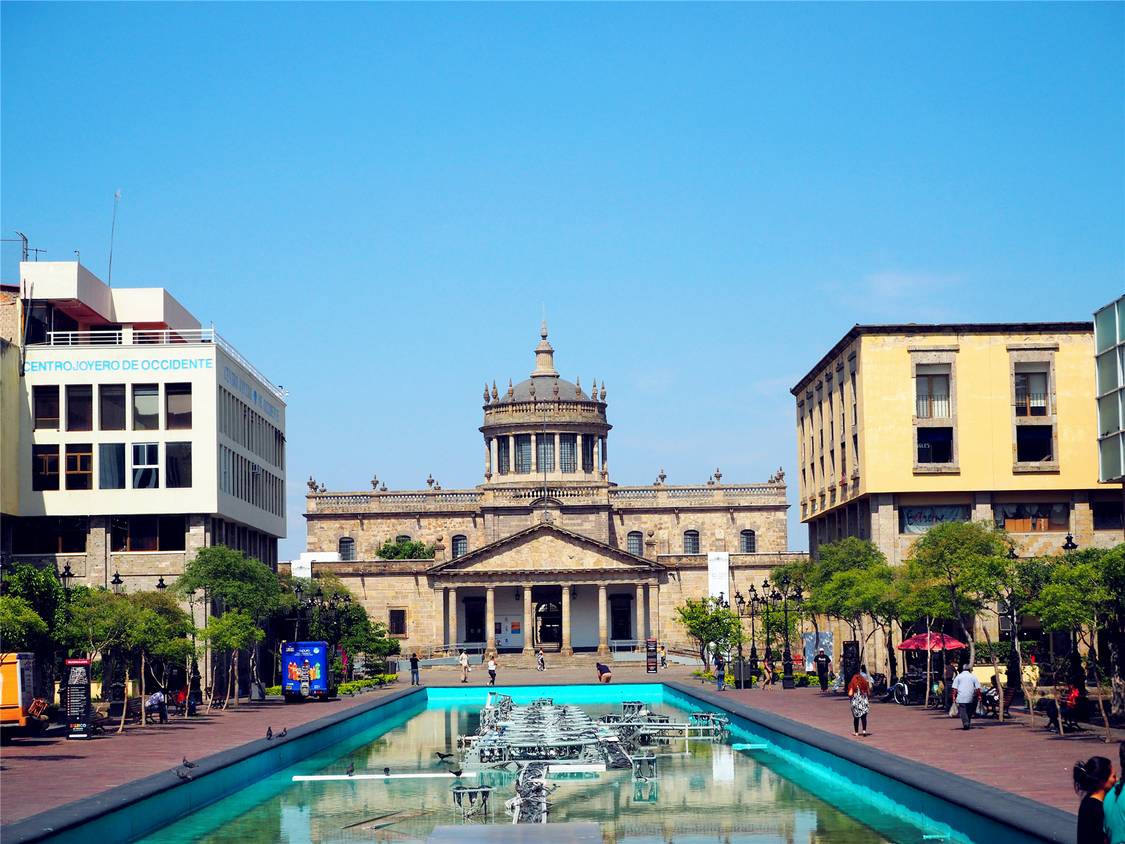Callejón del Beso
Callejón del Beso is one of the popular attractions. It is a very narrow alley, barely wide enough for one person to pass through. If a couple wants to pass through, kissing is inevitable. The flirtatious nature of Mexicans is due to the romance and passion in their blood.
People usually come here not for the Pipila Monument itself, but for its location. From here, visitors can overlook the entire Guanajuato, a bustling yet warm small town in a valley, and enjoy the beauty brought to the world by 'God's overturned palette.' Each colorful house standing on the undulating hills conveys the Mexicans' positivity and courage in the face of hardship.
Hidalgo Market
Hidalgo Market is located in a domed building next to Revolution Square. It is the largest vanilla market in Mexico, with authentic dishes and meats far more than souvenirs. Tourists who want to gain an in-depth understanding of local life should come and take a look. The talented and musical Mexicans often perform impromptu shows in the market.
Oaxaca
Oaxaca is the capital of the state of Oaxaca in Mexico. It is a place where the intense confrontation between Spanish and indigenous cultures has sparked a brilliant radiance. The city and its suburbs are home to numerous Mixtec and Zapotec archaeological sites. In 1987, the historic center of Oaxaca and the Monte Albán archaeological site were inscribed on the UNESCO World Heritage List. Strolling through the old town, one can see exquisite colonial-era buildings, plazas, and museums everywhere. The rich indigenous atmosphere and strong colonial culture intermingle and coexist harmoniously here.
Hierve el Agua Waterfall
The term 'Hierve El Agua' literally means 'boiling water'. Here, naturally formed limestone terraces descend vertically into the valley, with turquoise spring water bubbling from the mountain top, creating a spectacular natural pool and stalactite waterfall. Fortunately, this place has a high water level all year round, allowing every visitor to truly witness the grandeur of this 'flowing painting'.
Monte Albán was the capital during the Zapotec civilization period. The archaeological zone on the mountaintop includes ruins of ancient temples, palaces, and ball courts. Standing on the remnants of these structures today, one cannot help but marvel at the magnificent achievements of the past and feel a sense of insignificance in the face of historical changes.
San Miguel de Allende
San Miguel de Allende, known as the 'Heart of Mexico,' is a hot spot for artists, adventurers, couples, and travelers. Famous attractions include the Gothic-style Parroquia de San Miguel Arcángel, the San Felipe Neri Church, La Salud Church, and the San Miguel de Allende Museum of Fine Arts.
Guadalajara
Architecture always bears witness to history. The city of Guadalajara features a diverse range of architectural styles, from Neoclassical and Baroque to Neo-Gothic. Notable landmarks include the cathedral with its towers and surrounding plazas, the Hospicio Cabañas, and the Teatro Degollado, one of the most luxurious theaters in Latin America built in 1776. The most worthwhile visit is undoubtedly the Hospicio Cabañas.
Hospicio Cabañas
The Hospicio Cabañas was built in 1805 to care for and shelter those in need, such as orphans, the elderly, and people with disabilities. Its design is very user-friendly, making it convenient for them to live here. Under its humanitarian spirit, Hidalgo signed the order to abolish slavery here.





















